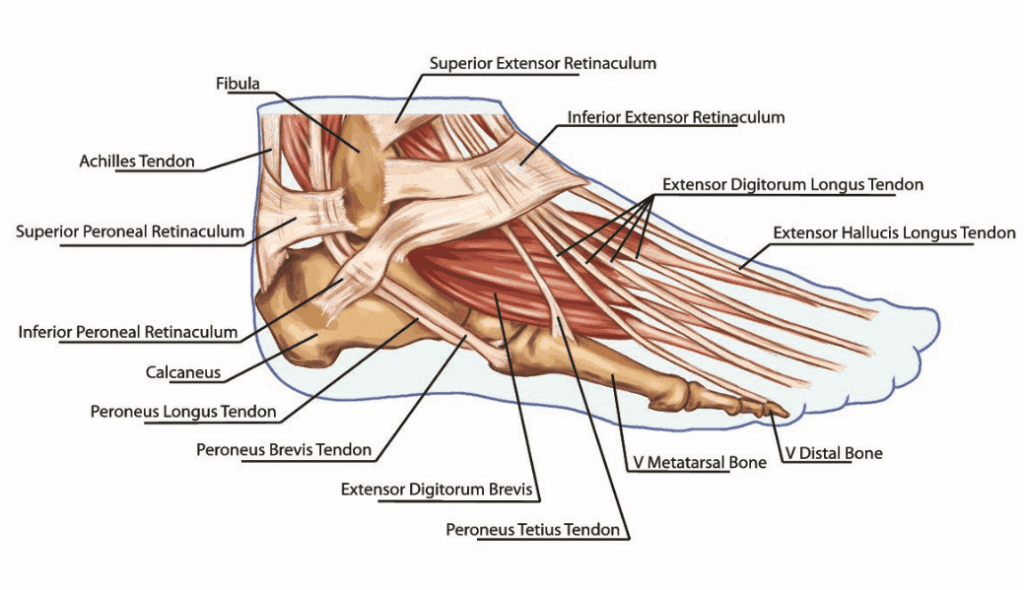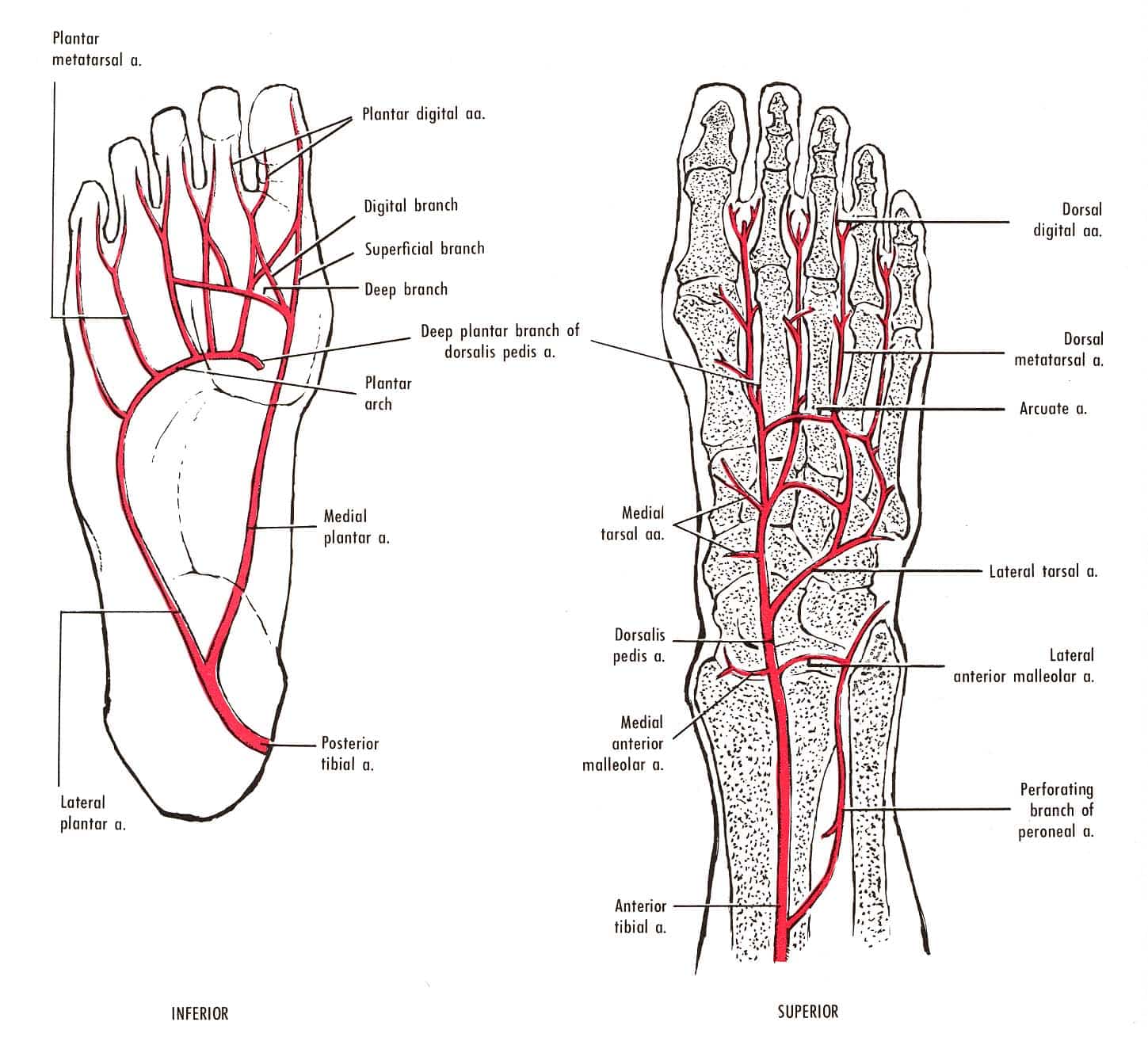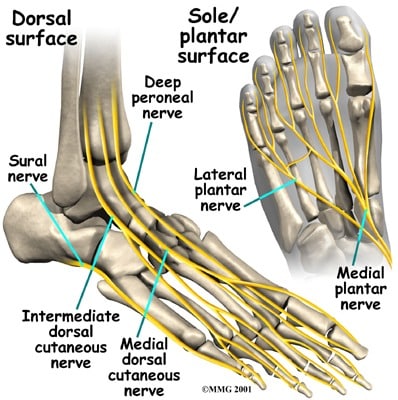The Human’s Foot Anatomy
Consciously, the foot might be the most forgotten part of the human body. At least in my life, my feet are pretty abused, especially when I spent nine months in Paris or 6 months in India. But it’s okay; your foot’s anatomy is designed to take a beating. Being one of the few bi-ped mammals, human feet are simultaneously flexible, sturdy, and versatile.
The foot anatomy provides us with the ability to run, jump, climb, grasp, and even use them as a weapon. Our feet are pretty important; they allow us to explore, climb mountains, jump from cliffs, swim, sprint, jump, climb trees, and so much more. Let’s take a look at the anatomy behind one of the most important structural foundations of the body, the human foot.
Bones of the Foot

Between the ankle and foot anatomies, there are over a hundred tendons, ligaments, and muscles and has over 33 joints. There are 26 bones in the foot and ankle, including 4 metatarsals, the metatarsus, and 5 of the proximal phalanges, middle phalanges, distal phalanges, 3 cuniform bones that form the base of the ankle, the cuboid bone, the navicular, the calcaneus, and the talus. The bones are all very intricate and articulate together to allow the ankle to flex and extend with the foot. The foot’s anatomy, you will find, is intricately related to the ankle, toes, and legs. The arch of the foot is formed from the navicular bone, 3 cuniform bones and the cuboid bone which create a shock absorber in the arch. The talus is the bone that forms the majority of the ankle and the calcaneus is the bone of the heel, while the metatarsals and phalanges form the toes and front of the foot.
Ligaments of the Foot
The ligaments of the foot anatomy are even more complex. The foot is really an intricate array of ligaments and muscles that have multiple cross sections for stability. The ankle has a good amount of study ligaments, with the toes having less and having more muscle and fascia to create flexible support. The major ligaments are the extensor hallicus brevis and longus, the extensor digitorum brevis and longus, the flexor hallicus longus, and the flexor digitorum longus, most of which have tendon sheaths on the outside of the foot. The peroneus tendons extend up the ankle from the outside of the foot anatomy, the peroneal retinaculum ligaments wrap the back of the foot and the extensor retinaculum ligaments wrap the front of the ankle.
The Major Muscles of the Foot
The major muscles of foot anatomy are the lumbrical muscles, the quadratus plantae muscles, the adductor hallucis muscle, the fibularis longus muscle, and the plantar interosseous muscles. They run along the ligaments to provide extension and flexion for the toes and provide padding for the foot. Fascia covers the muscles and ligaments to provide even more support and a flexible absorption system for the foot to support the rest of the body. Veins flow in between the metatarsals to the insides of the toes. They also criss-cross on the bones of the ankle and run up the ankle to the thighs via the posterior and anterior tibial veins.
The Nerves of the Foot
The final piece of the foot anatomy is the nervous flow through the ankle and into the toes. The deep fibral nerve runs down the ankle and splits into the peroneal nerves, the medial plantar nerve, the plantar digital nerves, the sural nerve, and the cutaneous nerves. There is a split into 9 nerve endings on the outside and inside of each toe. These nerves are not very sensitive, but are easily mis-aligned to cause significant pain.
It is kind of easy to see how the feet are often forgotten; their intricacy isn’t very apparent, but the sturdy foundation for human movement is nonetheless very important in our lives. So give your feet a break and show them some love, stretch them out in yoga, happy toes are important to having a well-functioning foot.
Anatomical Efficiency of the Foot
Using the ball of the foot is the most essential part of walking, running, and physical exertion. Many people get into the habit of walking on their heels, which can have very negative physiological effects, especially over long periods of time.
I bought Vibram’s a while back and I love them, but they were sued for false advertising because they really don’t have a positive effect on the foot. I still enjoy being able to grip with my toes, but keep in mind that your foot has natural padding in it; you don’t necessarily want to be wearing extreme support all the time. Try some minimalism, it feels great. Get a foot massage next chance you get, you’ll find that there aren’t many places in your body that can have more stress and usage than your feet.
Foot Anatomy is complex, what questions do you have? I would welcome any stories about issues with your foot or ankle and how severely it impacted your life.
Additional Resources:
Great Pictures of Foot Anatomy






